9 Oppression and Power
Geraldine L. Palmer; Jesica Siham Ferńandez; Gordon Lee; Hana Masud; Sonja Hilson; Catalina Tang; Dominique Thomas; Latriece Clark; Bianca Guzman; and Ireri Bernai
Chapter Nine Objectives
By the end of this chapter, you will be able to:
- Explain the concepts and theories of oppression and power
- Describe the intersection of oppression and power
- Identify strategies used by community psychologists and allies to address oppression and power

“Healing begins where the wound was made.”
-Alice Walker (The Way Forward is With a Broken Heart)
Community Psychology has grown up amidst times in US history and throughout the world where social change has been the interwoven thread throughout urban and suburban spaces. Social change continues to be the thread we must use to construct new realities. Not uncommon, as community psychologists have discovered over the past few years, social change work can often be more effective starting at the community level and then branching outward to macrosystems.
“….the definition and critical analysis of oppression has left out the complexity, voices and lived experiences of individuals who have been severely impacted by injustice and oppression…”
– bell hooks (1994)Macrosystems include influences of governmental policies, corporations, and belief systems. To this end, having a firm understanding of the dynamics that challenge communities is critical. This understanding must extend to grappling with some of the more unjust practices such as oppression and power that have influenced and shaped many of our communities today, particularly where members are people of color. The purpose of this chapter is to introduce the interrelated concepts of oppression and power and explore their relationship to the health and well-being of communities. We conceptualize oppression and power in upcoming sections. First, we give an overview of what oppression is. Second, we discuss the concept of power. Third, we discuss the relationship between oppression and power, because they typically never act alone. Fourth, we look at methodologies to deconstruct oppression and power. Finally, we offer strategies that can, and are, used in Community Psychology practice.

This chapter expands on the discussion of oppression and power in Chapter 1 (Jason et al., 2019) and other current Community Psychology textbooks, primarily through the lens of those who have been and continue to be oppressed. Broadly defined through theoretical and abstract concepts, the definition and critical analysis of oppression have left out the complexity, voices, and lived experiences of individuals who have been severely impacted by injustice and oppression. Our ways of knowing and being are credible and of critical importance to students learning how knowledge and power are created and what evidence is most credible in discussing them. We also include information that portrays the strength and resiliency of community members as a balance to the scholarship. The authors’ perspectives and inclusion of the lived experiences of others will add richness and depth to your studies.
JUST WHAT IS OPPRESSION?
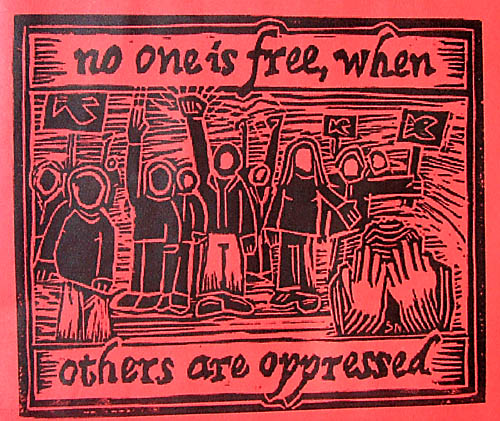
Oppression is defined in Merriam-Webster dictionary as: “Unjust or cruel exercise of authority or power especially by the imposition of burdens; the condition of being weighed down; an act of pressing down; a sense of heaviness or obstruction in the body or mind”. This definition demonstrates the intensity of oppression, which also shows how difficult such a challenge is to address or eradicate. Further, the word oppression comes from the Latin root primere, which actually means “pressed down”. Importantly, we can conclude that oppression is the social act of placing severe restrictions on an individual, group, or institution.

Moreover oppression is often discussed in the same context as the terms “dehumanization” and “exploitation”. These are terms that portray unjustness and cruelty. To adequately prepare you to effectively address the challenges many communities are facing, we include the terms to help familiarize you with what oppression feels like to the receiver. Understanding the perceptions, meanings, and experiences of community members is critical for work in Community Psychology in order to address social issues such as oppression. The excerpt below gives an example of a person, who also happens to be a community psychologist, describing their lived oppressive experiences:
Case Study 9.1
A Personal Communication
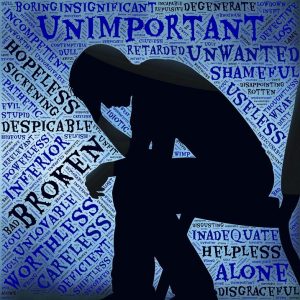
“…I felt this fullness, unexplainable presence, inner pain but it was not tangible, almost like a phantom ache or pain, that sensation a person has when they have lost a limb and it feels like it is still there but it hurts. It filled my body. I was grief-stricken. Sad. I felt that I, WE, THEY, have let our children down. Our Village is no longer protecting our children. That sacred piece of our legacy.
If I can take accountability or acknowledge this wrong, why doesn’t our oppressor? What is the value in destroying a child, a people, their dreams? It is mean, evil, greedy, disastrous, ugly, devilish, and immoral. It is every gunshot into the backs of Black men. It is an assassination of the human spirit. It rapes us of our purpose. Our young people should never, never feel uncared for, unwanted or invisible….
I bow my head with my hands over my ears and I sit in silence. I realize that these feelings have been sitting dormant…”
(-J. Samuel, personal communication, 2018)
It is important to note that while we are providing you with a framework of oppression and power, we will also provide you with examples of action strategies for how community psychologists and allies are supporting the resiliency in communities so that you can feel encouraged to discover your own way into combating oppression.
WHY OPPRESSION?
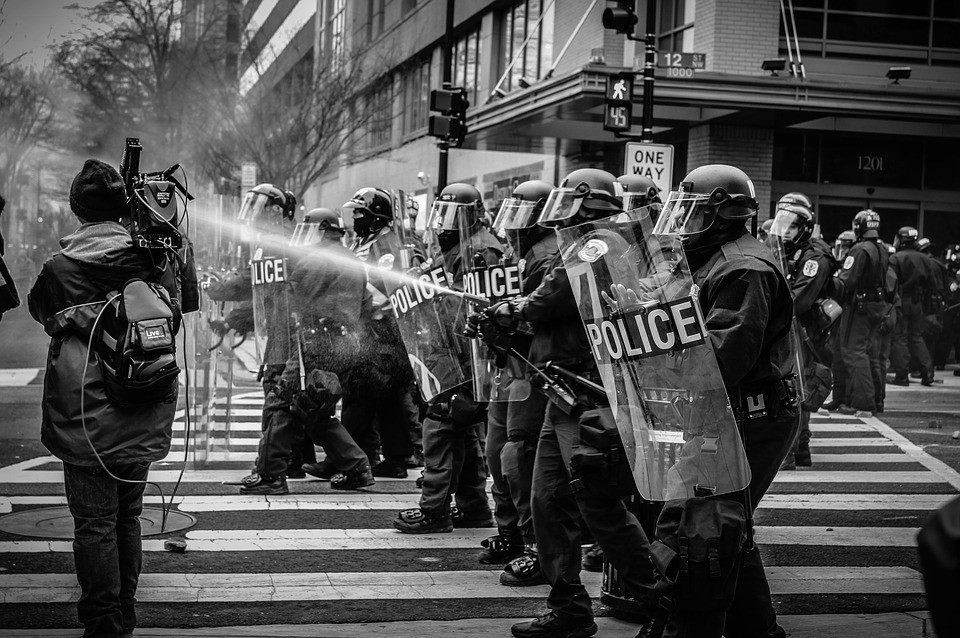
After studying the concept of oppression, you might be asking- what is the reason for oppression? Typically, a government or political organization that is in power places these restrictions formally or covertly on groups so that the distribution of resources is unfairly allocated—and this means power stays in the hands of those who already have it (a discussion on power follows this section). We understand that oppression occurs when individuals are systematically subjected to political, economic, cultural, or social degradation because they belong to a certain social group—this results from structures of domination and subordination and, correspondingly, ideologies of superiority and inferiority.
According to decolonial theory, over the last 500 years, the colonial matrix of power, patron colonial de poder has been and is one of the primary sources of oppression. Decolonial theory uses a framework that attempts to answer questions pertaining to knowledge, coloniality, and globalization. The “western world” is a production of coloniality and modernity. The latter two terms refer to the socio-cultural norms developed after the 18th century and the chapter in European history known as the Enlightenment. It is defined loosely by industrialization, science, division of labor, capitalism, secularism, education, and liberalism (Smith, 1999). Further western modernity created and constructed the idea of ‘race’ as a biological function, as part of a narrative to indicate the superiority of the white race and the inferiority of all other races (peoples). Western modernity and the colonial matrix of power have constructed a particular place: the West. Read more about the nature and origin of oppression here.
PSYCHOLOGICAL IMPLICATIONS OF OPPRESSION
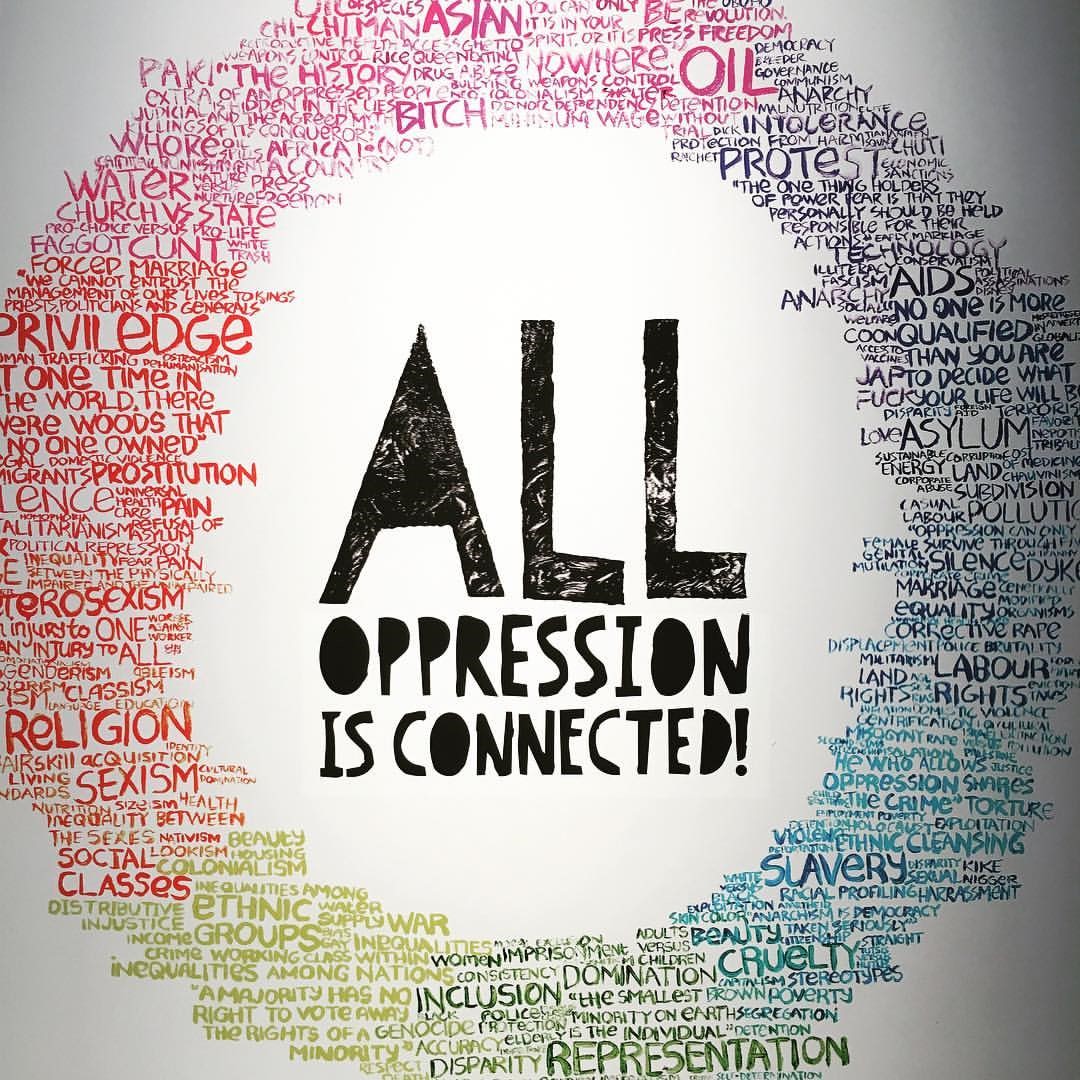
Oppression is described in psychology as states and processes that include psychological and political components of victimization, agency, and resistance where power relations produce domination, subordination, and resistance (Prilleltensky, 2003). The oppressed group suffers greatly from multiple forms of exclusion, exploitation, control, and violence. The literature on the psychological impact of oppression suggests that the erasure and removal of intrinsic cultural identities influenced by oppressive practices can lead to negative outcomes such as “internalization of negative group identities and low self-esteem.”
In understanding psychology of oppression, the oppressed initially adopt “avoidance reactions” which are responses that prevent adverse outcomes from occurring. This happens before one truly internalizes the ideologies of the oppressor, which ultimately results in engaging in self-destructive behaviors before reaching the point of internalized racism. and assimilation. Lastly, oppression is not a static concept nor does it have a fixed relationship to racism and discrimination. It changes and can be extremely non-transparent—both covert and overt. The tools of oppression are often disguised or hidden as privileges. Read more here on the impact of oppression and power on communities of color. Case Study 9.2 below provides a number of factors indicative of the impact of oppression from political, economic, and socio-cultural factors on one community in Chicago, IL.
Case Study 9.2
Englewood: Struggling to Rise

Once known as Junction Grove, the rich history of Englewood began in the mid-1800s as the area quickly developed into a rail and commerce crossroads. Junction Grove changed its name to Englewood in 1868, and in 1889, it became part of the City of Chicago. With its cross streets at 63rd and Halsted, the four railroad stations, and the 63rd Street ‘L’ stop, Englewood has long been a transportation hub of the southwest side. This easy access helped to make Englewood one of the largest outlying business districts in the country for much of the first half of the 20th century (Roberts & Stamz, 2002).
Yet, as racial strife shook the 1950s and ’60s, white flight occurred from US communities while African Americans moved in. Subsequently, banks refused to lend money to people trying to start businesses or buy homes in African American neighborhoods, and major grocery stores and other companies refused to open branches. Englewood was no exception (Lydersen, 2011). Further, political redistricting has resulted in Englewood being divided into five districts, each of which is assigned to a different Illinois district. This has created more division and strife. Can you identify the political, economic and socio-cultural factors resulting from oppression and power?
JUST WHAT IS POWER?
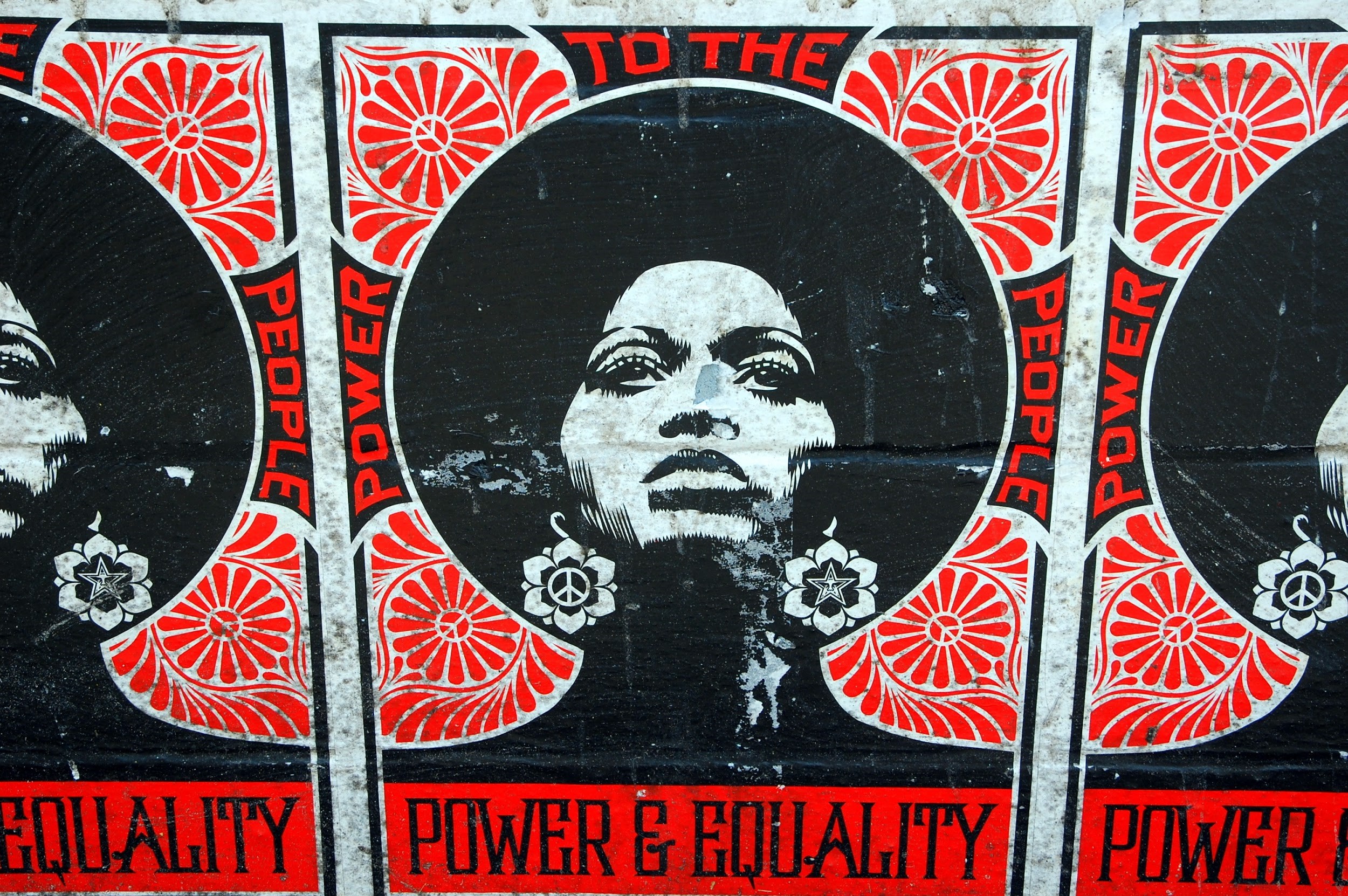
Power is a concept that has come to possess numerous meanings for different individuals. Power is multifaceted and takes various forms: power over, power to, and power from (Kloos et al., 2012). Power over is the ability to compel or dominate others, control resources, and enforce commands. Power to is the ability of people to pursue personal and/or collective goals and to develop their own capacities. Power from is the ability to resist coercion and unwanted commands/demands.
Much of the conversations on power have been through the lens of empowerment (Riger, 1993; Rappaport, 1981; Rappaport, 1987). Rappaport (1981) proposed empowerment as a phenomenon of interest for the field, stating the need for a distinction between actual power (i.e., political empowerment) and perceived power (i.e., psychological empowerment).
Furthermore, we understand empowerment as an individualistic concept which needs to incorporate social power. These theorists have conceptualized empowerment as a manifestation of social power and propose three instruments of its implementation. First, it is having control over resources in such a way that they can be used to reward and punish various people. Second, it is the ability to control barriers to participation through defining what we talk about and how we talk about it. One example is expert power, which is based on the “perceived knowledge, skill, or experience of a person or group” (Kloos et al., 2012). Third, it is a force that shapes shared consciousness through myths, ideology, and control of information. To support these concepts, Serrano-García (1984), a community psychologist, discusses both the successes and failures of a community development intervention in her homeland of Puerto Rico in Case Study 9.3.
Case Study 9.3
Proyecto Esfuerzo (Project Effort)
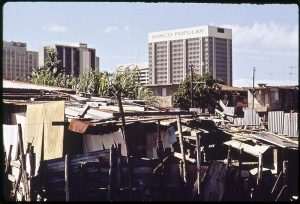
Irma Serrano-Garcia (1984) wrote, “As a member of a group of people who believe in equality and freedom and in the capacity of human beings to achieve both, I write as a Puerto Rican and community psychologist. My work stems from a social change perspective. As a community psychologist with a commitment to the “disadvantaged” groups of society, I believe that my values should be clearly stated… the island was under Spanish rule from 1843 to 1898 making our traditions mainly hispanic and our language, Spanish. The country was turned over to the US as a war booty of the Spanish American War in 1898” (Serrano-Garcia, 1984, p. 174).
To this end, the country was under the rule of the US for some aspects such as citizenship and foreign trade, and some areas were ruled by Puerto Rico’s internal governmental structure. Economically 60% of the citizens earned an annual income of $2,500 or less, while 70% received food stamps (SNAP Benefits) or other public benefits. Unemployed rates soared at 22.7% of the population and 99% of the food was imported. Serrano-Garcia further shared, “Our reality is one of colonization and not self-determination, of hispanic not anglo-saxon traditions and of underdevelopment and not economic growth” (p. 174). This and other factors prompted the onset of community development efforts to foster change directed by the quest for empowerment. The intervention framework to address this challenge included both a community development and research model. Six key points acted as guidelines including familiarization with the community, needs and resources, linking reality, concrete activities and resident’s integration, transition, and end of project. Read more here. How do the six guidelines used in the framework intersect with each other?
LANGUAGE AS POWER
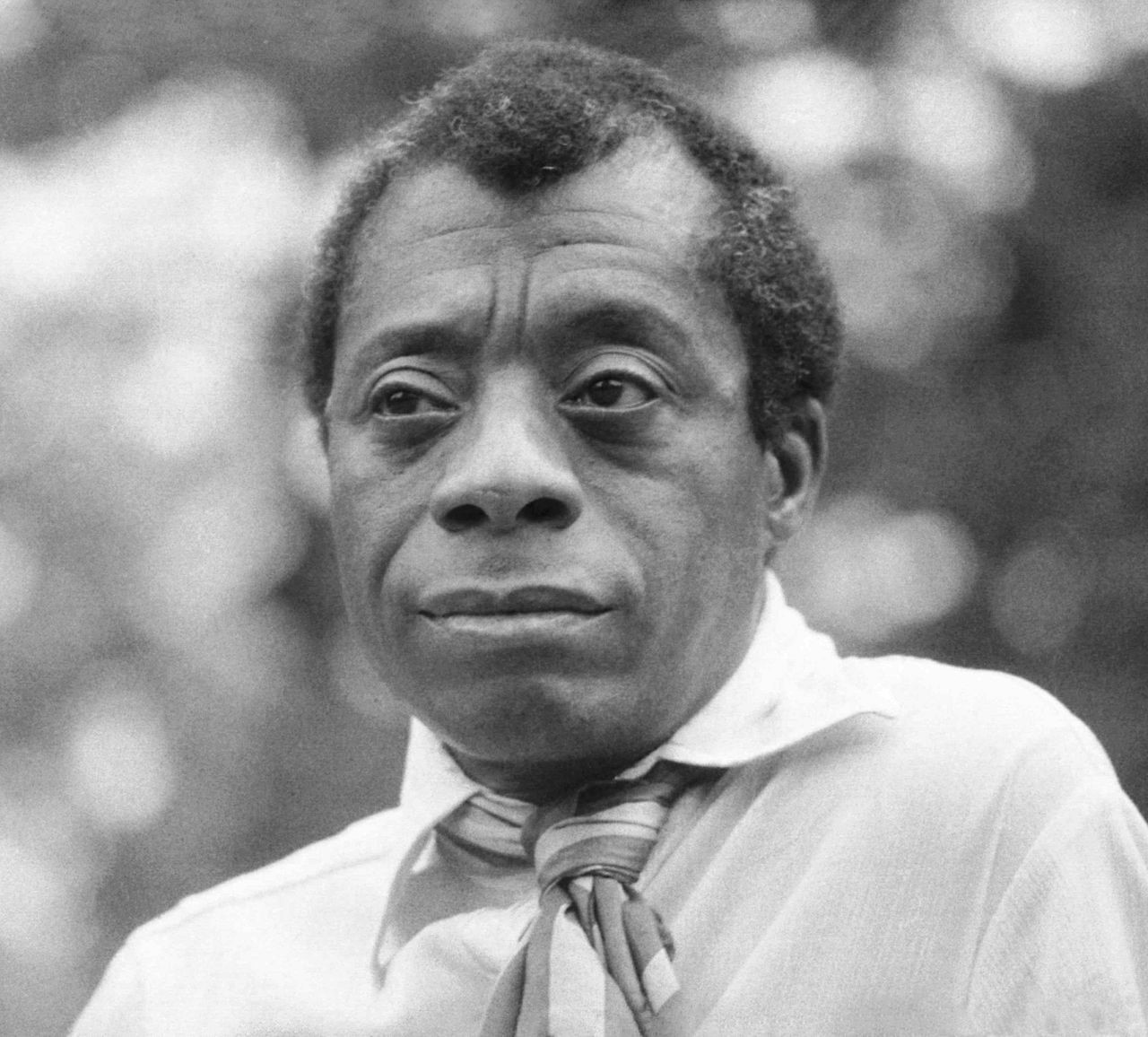
Systems of domination often work not only through physical force but through language. Cultural racism deems a group’s culture as inferior, including its language. A group’s social and political power typically coincides with the status of their language within the society (Belgrave & Allison, 2019). A byproduct of colonialism is the fact that millions of people around the world speak languages not indigenous to their own lands, but to former colonial powers (England, France, Spain, Portugal, etc.). Native cultures and languages were overthrown by the culture and language of the colonizers. Translation works both as a language tool and as an instrument of power, and this is used when languages are translated and when people are transformed, or translated, by changing their sense of their place in society.
Control over language and information is referred to as power/knowledge. Foucault asserts that power is inherently tied to control over and access to information and vice versa. Knowledge is always related to systems of power. James Baldwin (1979) similarly refers to language as a political instrument. The language a person uses communicates their status within that society. He proposed the language barrier that prevented Africans from communicating with one another limited their collective power. According to Baldwin, the development of Black English is a result of particular relationships of power: “A language comes into existence by means of brutal necessity, and the rules of the language are dictated by what the language must convey.”
COLONIALISM AS POWER
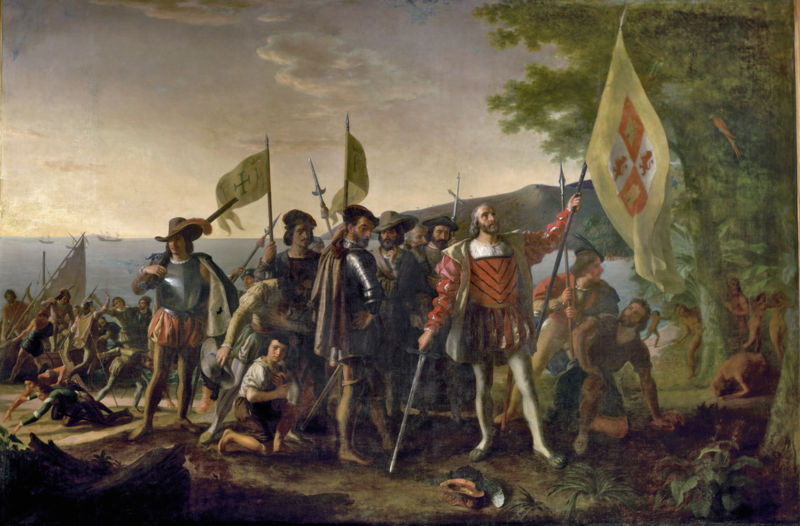
Perhaps one of the most expansive and dominating forms of power has been colonialism. During the 19th century, as much as 90% of the world was controlled and/or colonized by western (European and European-derived) nations. This suppression and domination were justified using the construct of race, false research theories that portrayed non-white populations as infantile, incompetent, primitive, savage, and needing western powers to civilize them and bring them into modernity. The rise of settler societies like the US and Canada are the results of centuries of violent conflict, cultural and spatial displacement, and social, economic, and political oppression. During the 20th century, people across Africa, Asia, and Latin America engaged in anti-colonial struggles for independence. Although formal imperial empires came to an end when these countries gained their independence, informal empires remained, as many nations continued to be dependent on former colonial powers. Consequently, political, economic, and military controls were largely maintained within these nations, as a result of adopting the power and oppression of the colonial powers.
OPPRESSION AND POWER: TWO SIDES OF THE SAME COIN

Power and oppression can be said to be mirror reflections of one another in a sense or are two sides of the same coin. Where you see power that causes harm, you will likely see oppression. Oppression emerges as a result of power, with its roots in global colonialism and conquests. For example, oppression as an action can deny certain groups jobs that pay living wages, can establish unequal education (e.g., through a lack of adequate capital per student for resources), can deny affordable housing, and the list goes on. You may be wondering why some groups live in poverty, reside in substandard housing, or simply do not measure up to the dominant society in some facet. We have some idea, but today we are still grappling with these questions and still conducting research studies to better understand.
As discussed at a seminar at the Leaven Center (2003), groups that do not have “power over” are those society classifies or labels as disenfranchised; they are exploited and victimized in a variety of ways by agents of oppression and/or systems and institutions. They are subjected to restrictions and seen as expendable and replaceable—particularly by agents of oppression. This philosophy, in turn, minimizes the roles certain populations play in society. Sadly, agents of oppression often deny that this injustice occurs and blames oppressive conditions on the behaviors and actions of the oppressed group. Oppression subsequently becomes a system and patterns are adopted and perpetuated. Thai and Lien (2019) in Chapter 6 discuss diversity and highlight the impact of “white privilege” as a major contributor to systems and patterns of oppression for non-privileged individuals and groups.
Additionally, socialization patterns help maintain systems of oppression. Members of society learn through formal and informal educational environments that advance the ideologies of the dominant group, and how they should act and what their role and place are in society. Power is thus exercised in this instance but now is both psychologically and physically harmful. This process of constructing knowledge is helpful to those who seek to control and oppress, through power, because physical coercion may not last, but psychological ramifications can be perpetual, particularly without intervention.
As shared, knowledge is sustained through social processes, and what we come to know and believe is socially constructed, so it becomes ever more important to discuss dominant narratives of our society and the meaning it lends to our culture. It is our role as community psychologists to be a witness, to advocate, and to raise the voice and consciousness of those who lack power and /or the capacity to do so themselves. It is also our role to raise the consciousness of those who oppress and disempower. In the next section, we shall take a look at roles community psychologists can play in consciousness raising and deconstructing power and oppression.
ACTION STRATEGIES: DISMANTLING OPPRESSION AND POWER

As mentioned in Chapter 1 (Jason et al., 2019), community psychologists endorse a social justice and critical psychology perspective, where the position is to challenge and address oppressive systems through a number of action strategies including approaches that fall under a dismantling framework. To this end, we now discuss two interconnected, yet distinct community approaches that focus on what is termed the deconstruction and reclaiming of power. Deconstruction has its roots in Jacques Derrida’s work in critical analysis of theoretical and literary language. We speak about reclaiming as simply recovering or getting back. A discussion of liberation, followed by decolonization and reclaiming power through Black Feminist theory, concludes this section, as it demonstrates how power is de-centered and reclaimed for the power and liberation of communities.
LIBERATION
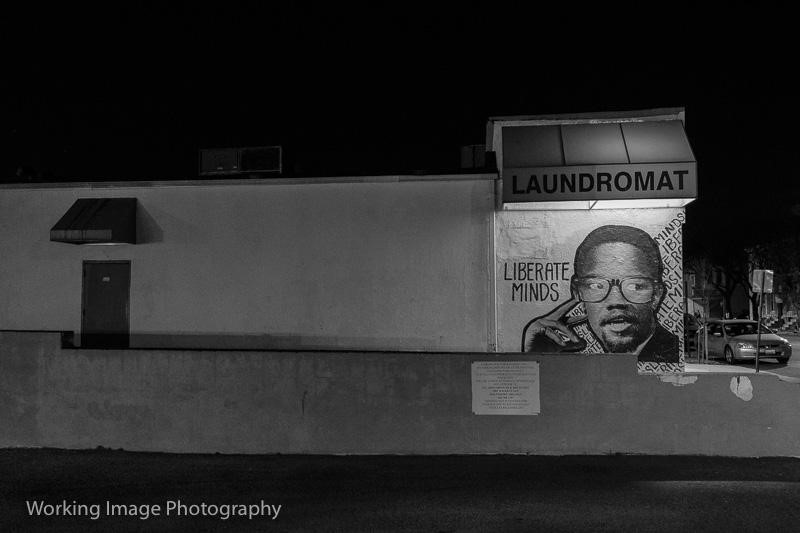
Community psychologists engage topics associated with the dismantling of oppression and power. One of these concepts is liberation. Liberation is defined as the social, cultural, economic, and political freedom and emancipation to have agency, control, and power over one’s life. To live life freely and unaffected or harmed by conditions of oppression is to experience liberation (Watkins, 2002). Although there are varied ways of experiencing liberation – from the individual to the community to the systemic – each one is interconnected with the other. An individual, or psychological sense of liberation, lies in the ability for the person to feel unconstrained by stereotypes and prejudiced ideas that manifest as acts of discrimination. When individuals are constantly feeling that their bodies are being perceived and categorized in biased ways because of their race, ethnicity, gender, sexuality, age, and other visible characteristics, their capacity to act with free will is constrained. For example, students of color at predominantly white institutions of higher education often experience higher levels of stress and anxiety because they experience more micro-aggressions (Hope et al., 2018). Students of color are therefore marked by these experiences in ways that are detrimental to their well-being and academic success. Liberation for these students is limited by the culture of racism and colorblindness inherent in the university. At a collective or community level, liberation is possible when the group is able to gain power and control over the knowledge, systems, and institutions that surround their lives. As Brazilian popular educator, Paulo Freire, suggests, liberation is a social act, a process of becoming free from ideologies that limit our freedom and the institutions or structures that constrain people’s collective determination. Liberation must be understood as having a critical consciousness of the circumstances and conditions of oppression that challenge and limit opportunities for freedom. Liberation is also a practice of working to create change. As Martín-Baró proposes, liberation is the dismantling of oppression and power, and striving to create social change that recognizes the humanity and dignity of all people. As an example of this work, we have included in Case Study 9.4 an excerpt of a letter adopted by the Society for Community Research and Action (SCRA) in opposition to the Dakota Access Pipeline.
Case Study 9.4
The Dakota Access Pipeline
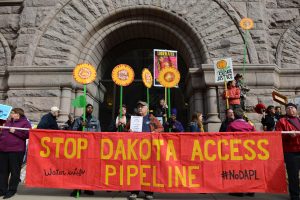
In July 2016, the Army Corps of Engineers approved the plans for the Dallas-based Energy Transfer Partners to construct the Dakota Access Pipeline, a 1,172 mile underground crude oil transportation system stretching from North Dakota to Illinois. It is estimated that the pipeline will pump just under half a million barrels of fracked crude oil per day across the Missouri River, the Mississippi River, and other sources of drinking water, which will impact surrounding communities. Although many will potentially be affected by the proposed pipeline, the Lakota Sioux and the Standing Rock Sioux Indian Reservation spanning North and South Dakota are among those most directly affected by the pipeline and have voiced strong opposition to its continued construction. As psychologists committed to racial, ethnic, and cultural justice we stand in opposition to the continued construction of the Dakota Access Pipeline so long as that pipeline infringes on the environmental health and sacred spaces of indigenous communities…Read more of the letter here. What are examples of dismantling and liberation?
DECOLONIALITY
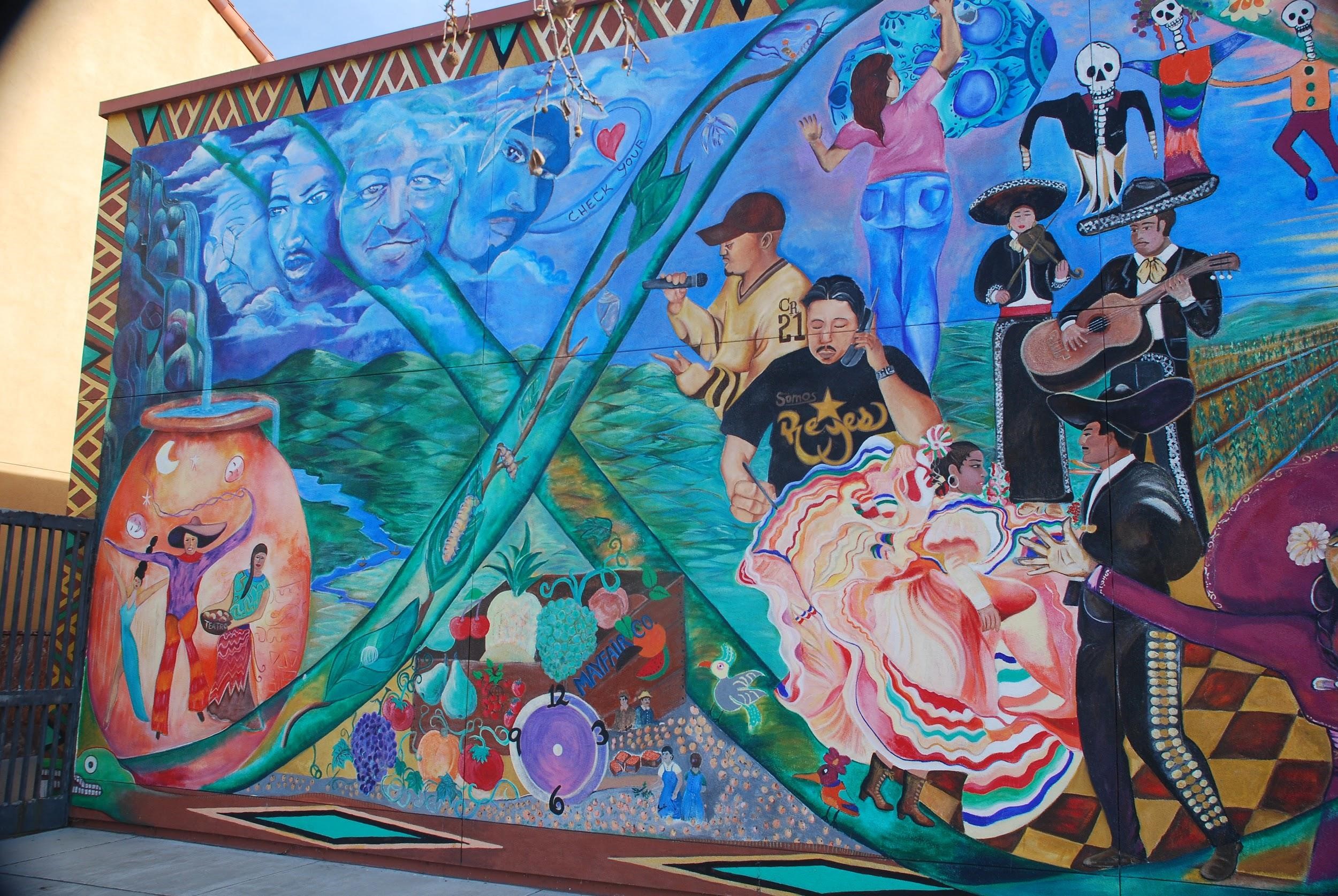
Although often associated with freedom, decoloniality is not the same nor should it be equated with liberation. Decoloniality is characterized by a process of undoing, disrupting, and de-linking knowledge rooted in Eurocentric thinking that ignores or devalues the local knowledge, experiences, and expertise of non-western peoples or dominant social groups (Maldonado-Torres, 2011). Furthermore, decoloniality challenges coloniality and colonialism – the former defined as the power and control over people and knowledge, and the latter being a process through which power and control are acquired often through violence (Mignolo, 2009). Decoloniality, therefore, contests the assumptions of systems, or the organization of peoples and worlds, into categories. For example, the “othering” of Indigenous communities by forcing them onto reservation lands and then subsequently occupying and exploiting these lands and natural resources, as in the Dakota Access Pipeline examples, is a form of coloniality. This “othering” perpetuates the oppression and dehumanization of Indigenous communities across generations (Gone, 2016). Re-thinking and deconstructing Eurocentric/western ideologies and practices that uphold coloniality as the power over people, lands, and knowledge is thus the main point of decolonization. A decolonial standpoint in Community Psychology honors and respects the humanity of all communities, especially those that have been institutionally marginalized, and sees values in local knowledge, culture, and place (Moane, 2003). An example of a decolonial community-based participatory action research project is the collaborative led by Dr. Jesica Siham Ferńandez and Dr. Laura Nichols, involving Mexican immigrant mothers in a community undergoing gentrification in the Silicon Valley (California, US). It centers on the voices, culture, and lived experiences of Mexican and Latinx communities (check out a newspaper report covering the making of the mural, and a short news media coverage showcasing the madres speaking about their process).
BLACK FEMINIST THOUGHT
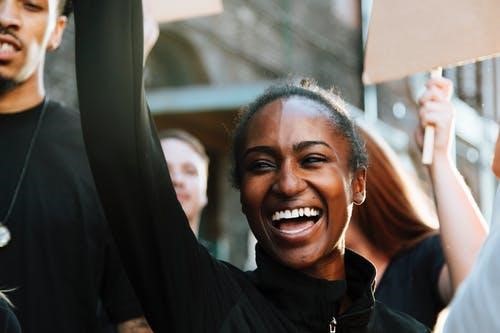
This section discusses intersectionality as a form of decolonialism that is crucial to a well-rounded understanding of how our multiple identities play into the world around us. Intersectionality, rooted in Black feminist thought, emerged at the turn of the 21st century. Black feminist theory, informed by the work of Collins (1990/2000), Lorde (1984), hooks (1994), the Combahee River Collective, and other Black feminist scholars such as Sojourner Truth and other writers and activists, surfaced as a radical movement. Intersectionality was developed by Kimberlé W. Crenshaw and this short video link should help with understanding. The concept primarily illustrates the intersectional experiences of Black women, whose concerns were neither fully addressed within the Civil Rights Movement, nor the (white) feminist movement. Intersectionality posits that race and gender categories, along with other dimensions of identity and positionality, such as sexuality, age, class and able-bodiness, are clear and have social, legal, political, and economic implications. Within Community Psychology, intersectionality provides a theoretical lens for re-conceptualizing race, along with other categories of difference and positions of power, beyond identity politics. Rather than focusing on the politics of difference, intersectionality describes the interlocking patterns of oppression and marginality that structure people’s lives, opportunities, and enfranchisement. Intersectionality provides a theoretical framework from which we can examine and deconstruct the structures of race and gender oppression (Collins, 1990/2000). Furthermore, intersectionality also offers implications for working toward a practice of solidarity among those interested in advancing social justice.
SYSTEMS PERSPECTIVE
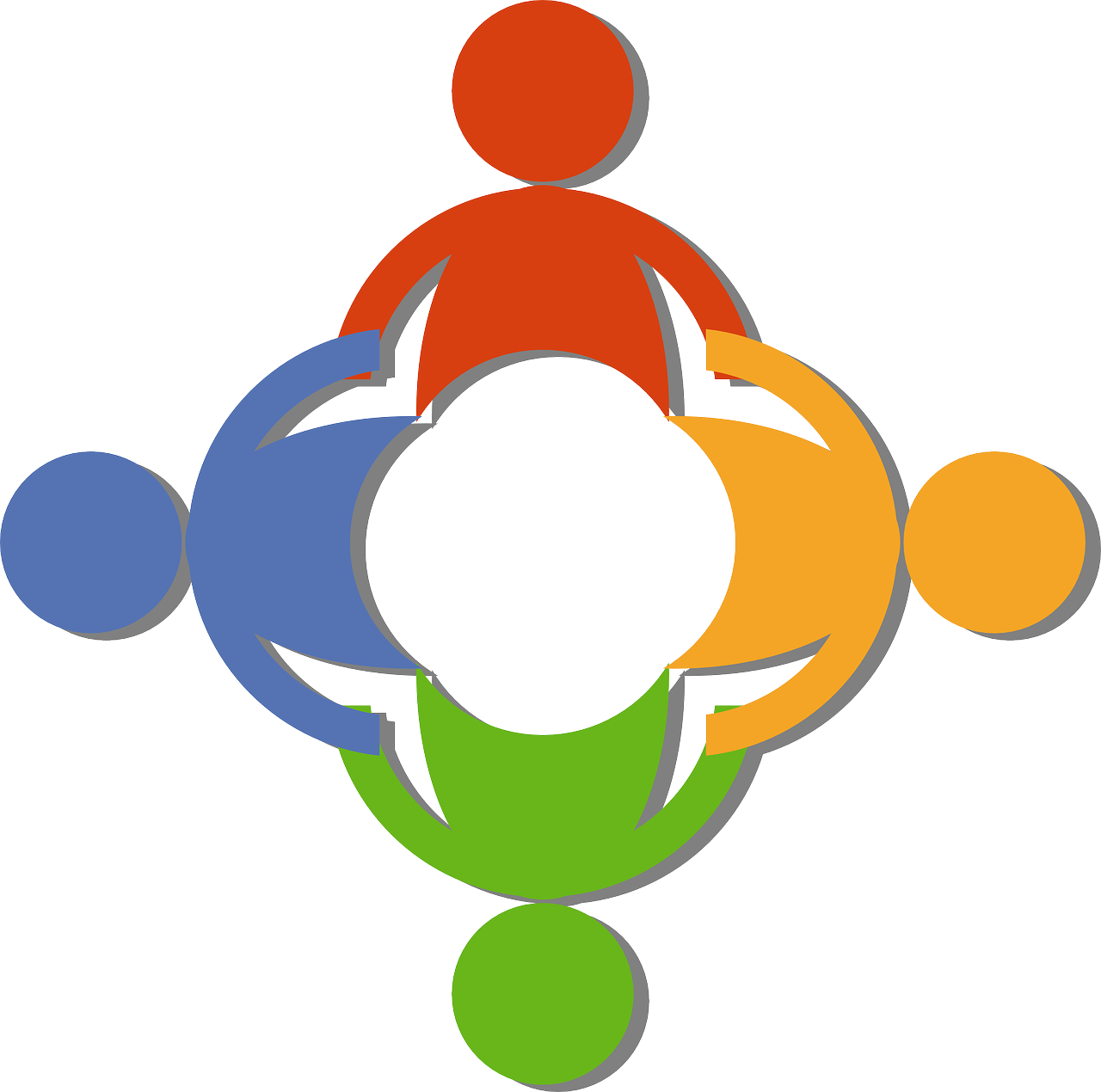
The concepts of oppression and power are not only multi-dimensional but also involve multifaceted, complex means of being executed. In order to effectively conceptualize dismantling and disrupting power and oppression, it is important to delve further into looking at systems by which power and oppression exist and are maintained. Bronfenbrenner’s ecological systems theory provided a framework for us to examine how power and oppression are carried out and perpetuated in individual and community environments. Yet, human behavior is not simply nested as Bronfenbrenner theorized, but our behavior is also networked, where each system is defined in terms of the social relationships surrounding a targeted individual, and where systems at different levels relate to one another in an overlapping fashion (Neal & Neal, 2013). Thus, dismantling power and oppression is a difficult task that requires a community systems approach. It is also important to note that historical events such as colonialism and change across time necessitate that idea that power/oppression must be continually re-examined and monitored.
The Chicanx Student Movement is an example of the results of oppression and power and a social action strategy, to address the issue. See Case Study 9.5 for a discussion on the East LA “Blowouts”.
Case Study 9.5
The Chicano Student Movement and Educational System in East LA
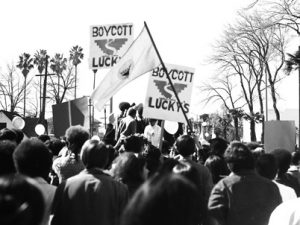
The 1968 East LA blowouts were a direct response to the educational inequities experienced by Chicanx students attending several of the local high schools in the East LA area (e.g., Wilson, Lincoln, Belmont, Roosevelt, Garfield). For example, students attended schools that lacked resources, were placed in overcrowded classrooms where they often faced derogatory comments by teachers, were prohibited from talking in Spanish and where disobedience was met with corporal punishment or janitorial work. Moreover, non-white male students were pushed into non-academic classes like wood shop or auto-mechanic shop classes while females were sent to cooking classes, sewing, and secretary prep courses. Consequently, dropout rates were as high as sixty percent.
However, as the numbers of students walking out grew, so did the challenges. Students who joined the walkouts were met with violence from police deployed to the schools. While many students were beaten during the walkouts, other students, who helped to lead the movement, faced further legal troubles. As a result, 13 male students were charged with conspiracy, only avoiding charges after protests by the community were held and litigations were filed. Fifty years later, the Los Angeles Unified School District and Cal State LA, a Hispanic Serving Institution (HSI) in the heart of the East LA area, organized a “walk-in” to commemorate the 1968 blowouts and to highlight the changes that have occurred. Over 500 high school students from the same walkout schools marched onto the Cal State LA campus chanting “Yes we can.” While this is certainly a change, the reality for students is that they continue to struggle to gain access to higher education.
Protests and other forms of addressing community issues often result in unintended consequences but continue to be strategies employed to advance social justice. What are some strategies for mitigating unintended consequences?
Other action strategies discussed in earlier chapters that have been met with both challenges and successes are in social movements and consciousness-raising efforts. In recent years there has been an explosion of young people’s participation in social movements across the U.S. Some include involvement in long-term struggles such as the fight for equal rights for the LGBTQ+ community, and some are a continuance of prior social movements such as the #MeToo Movement (evolving from the struggle for women’s rights) as well as the Black Lives Matter movement. Read more here.
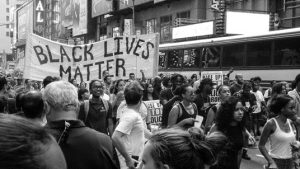
Consciousness-raising efforts have their roots in a number of theorists’ frameworks and movements including Pedagogy of the Oppressed and the feminist movements as previously mentioned. Yet, it is important to also understand that structural systems of oppression are found in the categorical labeling we use to exclude and separate. Case Study 9.6 below illustrates a strategy for dismantling labeling that perpetuates inequality through reframing the language of liberation.
Case Study 9.6
Reframing Language for Liberation
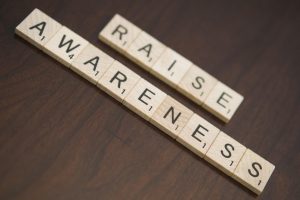
In 2012, Geri Palmer, former executive director of a non-profit organization in Chicago and current community psychologist, became aware of the importance of the influence of public perspectives and attitudes regarding people who are homeless, specifically relative to funding and resources. She recognized that public perceptions and attitudes are formed in many ways, one being the words and terms used to discuss, and refer to marginalized populations. This is important, as terms that describe and categorize people experiencing homelessness, such as “the homeless” and “homeless people” are widely used by those in the helping professions. Yet, they reflect the core ideologies and economic interests of the dominant majority and have their roots in historical systems of inequality and oppression.
Through a series of workshops held in medical and health care facilities, in board development workshops, conferences, and classrooms designed to raise awareness, The Language Reframing Project was initiated. The goal was twofold: (1) Raise awareness of language and labeling and its negative implications; and (2) reframe language and labeling in discourse and in reference to people who are homeless, as well as other populations considered marginalized. This can specifically be applied to all marketing materials including websites and social media. One agency has changed its online marketing materials to align with the campaign’s mission, and former employees of this agency report they are pushing forward the language reframing initiative in their new workplaces and overall worldview. The Salvation Army has adopted a similar campaign (Palmer, 2018)…Read more here. Why does categorical labeling of certain groups of people perpetuate oppression?
SUMMING UP

Community psychologists are equipped with the skills and training, practice, and lived experience needed to address the most pressing of social issues and concerns in our communities today. The continuation of structural systems of oppression and power, and its grip on our communities, families, and individuals is an ever-present concern and it is no easy task to engage in dismantling and addressing structural systems. Yet, we are advancing social justice through the strategies we mention here and are making great strides by supporting the resiliency in the same communities where oppressive systems exist. We strived to make this portion of the book as realistic as possible, particularly with the help of looking through the eyes of community psychologists who have lived experiences as well as allies who support the work of community psychologists in practice and community-driven research. We wanted a chapter that spoke to the multi-faceted dynamics of oppression and power, but also provided actionable strategies that are tools for liberation. Moreover, by providing this free online textbook, we are in a very direct way dealing with the high price of textbooks that often is a real hurdle for our college students, who sometimes can not even afford to purchase them and are disadvantaged by this economic barrier. This effort is a strategy that also empowers and liberates.
We have attempted to include a balanced view, discussing the concepts and impact, but showing how resilience and empowerment have been successful at advancing social justice. It is important for undergraduate students, specifically in Community Psychology, to see the fullness of what the discipline embraces and strives to uphold.
Critical Thought Questions
1. What experiences do you have with power and/or oppression? In thinking about the “two faces” of power and oppression, how have you seen power and oppression operate in your life or in the life of others in your community?
2. Reread Dr. Irma Serrano-Garcia’s article. Identify the role of coloniality and colonialism in shaping the Puerto Rican experience. What do coloniality and colonialism look like today?
3. Explain how you have experienced or seen power operate in your life or in your community. What are some contemporary examples of the coloniality of power today?
4. Think back to the other cases studies presented in this chapter. Identify how oppressed and institutionally disenfranchised communities interrupted and sought to deconstruct power.
5. Reflecting back on the experience of power or oppression that you initially identified, what is one theory or concept that stood out to you, and which helps you think about ways of addressing oppressive systems of power? Why does that theory or concept stand out to you the most?
Take the Chapter 9 Quiz
View the Chapter 9 Lecture Slides
____________________________________________________________________
REFERENCES
Baldwin, J. (1979). If Black English isn’t a language: Then tell me what is? The Black Scholar, 27(1), 5-6.
Belgrave, F. Z., & Allison, K. W. (2019). African American psychology: From Africa to America. Sage Publications.
Collins, P. H. (1990/2000). Black feminist thought: Knowledge, consciousness and the politics of empowerment. Routledge.
Gone, J. P. (2016). Alternative knowledges and the future of community psychology: Provocations from an American Indian healing tradition. American Journal of Community Psychology, 58(3-4), 314-321.
hooks, B. (1994). Teaching to transgress. Routledge.
Hope, E. C., Velez, G., Offidani-Bertrand, C., Keels, M., & Durkee, M. I. (2018). Political activism and mental health among Black and Latinx college students. Cultural Diversity and Ethnic Minority Psychology, 24(1), 26.
Jason, L. A., Glantsman, O., O’Brien, J. F., & Ramian, K. N. (2019). Introduction to the field of Community Psychology. In L. A. Jason, O. Glantsman, J. F. O’Brien, & K. N. Ramian (Eds.), Introduction to Community Psychology: Becoming an agent of change. https://press.rebus.community/introductiontocommunitypsychology/chapter/intro-to-community-psychology/
Kloos, B., Hill, J., Thomas, E., Wandersman, A., Elias, M., & Dalton, J., (2012). Community psychology: linking individuals and communities. Wadsworth Cengage.
Leaven Center (2003). Doing Our Own Work: A Seminar for Anti-Racist White Women. Visions, Inc. and the MSU Extension Multicultural Awareness Workshop.
Lorde, A. (1984). Age, race, class and sex: Women redefining difference. In Sister outsider: Essays and speeches. Crossing Press.
Lydersen, K. (2011, June 18). Culinary school thrives, but neighbors stay poor. The New York Times. https://www.nytimes.com/2011/06/19/us/19cncwashburne.html
Maldonado-Torres, N. (2011). Thinking through the decolonial turn: Post-continental interventions in theory, philosophy, and critique: An introduction. Transmodernity: Journal of Peripheral Cultural Production of the Luso-Hispanic World, 1(2).
Mignolo, W. D. (2009). Epistemic disobedience, independent thought and decolonial freedom. Theory, Culture & Society, 26(7-8), 159-181.
Moane, G. (2003). Bridging the personal and the political: Practices for a liberation psychology. American Journal of Community Psychology, 31, 91–101.
Neal, J., & Neal, Z. (2013). Nested or networked? Future directions for ecological systems theory. Social Development, 22(4), 722-737. https://doi.org/10.1111/sode.12018
Palmer, G. (2018). People who are homeless are “people” first: Opportunity for community psychologists to lead through language reframing. Global Journal for Community Psychology in Practice. https://www.gjcpp.org/en/article.php?issue=30&article=180
Prilleltensky, I. (2003). Understanding, resisting, and overcoming oppression: Toward psychopolitical validity. American Journal of Community Psychology, 31(1-2), 195-201.
Rappaport, J. (1987). Terms of empowerment/exemplars of prevention: Toward a theory for community psychology. American Journal of Community Psychology, 15(2), 121-148.
Rappaport, J. (1981). In praise of paradox: A social policy of empowerment over prevention. American Journal of Community Psychology, 9, 1-25.
Riger, S. (1993). What’s wrong with empowerment? American Journal of Community Psychology, 21, 279-292.
Roberts, M., & Stamz, R. (2002). Chicago’s Englewood neighborhood: At the junction (Images of America). Arcadia Pub.
Serrano-García, I. (1984). The illusion of empowerment: Community development within a colonial context. Prevention in Human Services, 3(2-3), 173-200.
Smith, L. T. (1999). Decolonizing methodologies: Research and indigenous peoples. Zed Books, Ltd.
Thai, N. D. & Lien, A. (2019). Respect for diversity. In L. A. Jason, O. Glantsman, J. F. O’Brien, & K. N. Ramian (Eds.), Introduction to Community Psychology: Becoming an agent of change. https://press.rebus.community/introductiontocommunitypsychology/chapter/respect-for-diversity/
Watkins, M. (2002). Seeding liberation: A dialogue between depth psychology and liberation psychology. In D. Slattery & L. Corbett (Eds.), Depth psychology: Meditations in the field. (pp. 204-225). Daimon Verlag.

Acknowledgments: We wish to thank Ann Marie Beals for their diligent work in reviewing our chapter. We wish to thank Lenny Jason, Olya Glantsman, Jack O’Brien and Kaitlyn Ramian for their feedback and support of our chapter.
Oppression can be described as the collusion of dehumanization and exploitation.
Deconstruction is a concept central to postmodernism. It is a process of rigorously analyzing and making apparent the assumptions, judgments, and values that underlie social arrangements and intellectual ideas.
Involves redefining the targets of prejudice and violence by making them seem less human (that is, less civilized or less sentient) than other people.
Exploitation occurs when one social group is able to take for itself what is produced by another group.
As a revolutionary epistemology, decolonial theory and methods feature critical insights into knowledges from subaltern voices concerned with how the implementation of modern technologies shape colonial structures, inequalities, the daily lives of the colonized, and resistance strategies.
Described in four interrelated domains: control of economy (land appropriation, exploitation of labor, control of natural resources); control of authority (institution, army); control of gender and sexuality (family, education) and control of subjectivity and knowledge (epistemology, education, and formation of subjectivity).
More than just a consequence of racism, internalized racism is a systemic oppression in reaction to racism that has a life of its own. In other words, just as there is a system in place that reinforces the power and expands the privilege of white people, there is a system in place that actively discourages and undermines the power of people and communities of color and mires us in our own oppression.
The ability to compel or dominate others, control resources, and enforce commands.
The ability of people to pursue personal and/or collective goals and to develop their own capacities.
Is the ability to resist coercion and unwanted commands/demands.
A “social order or pattern that has attained a certain state or property…and [owes] [its] survival to relatively self-activating social processes” (Jepperson, 1991, p. 145). In other words, institutions are enduring, historical facets of social life that shape our behavior. Examples of institutions include the family, marriage, media, medicine, law, education, the state, and work. These institutions can be said to structure thought and behavior, in that they prescribe rules for interaction and inclusion/exclusion and norms for behavior, parcel out resources between groups, and often times rely on formal regulations (including laws, policies, and contracts).
The extension of a nation's sovereignty over territory beyond its borders by the establishment of either settler colonies or administrative dependencies in which indigenous populations are directly ruled or displaced. Colonizing nations generally dominate the resources, labor, and markets of the colonial territory, and may also impose socio-cultural, religious, and linguistic structures on the conquered population.
The reclaiming of power as liberation from oppression. Theoretical concepts such as empowerment and decolonization provide a baseline for community capacity building and self-determination.
The process of claiming and redefining identities; the process can includes naming the places where one needs to take charge and act more powerfully, plan changes and take action that reconnect the person with their inherent power.
An intersectional approach takes into account the historical, environmental, socio-cultural, and political context and recognizes the unique experience of the individual based on the intersection and implications of all relevant grounds.
An approach that encompasses understanding the interrelated parts and dynamics of a community. Each part has its own organizing processes that influence, and in turn are influenced by, other parts. The total systems then are organized at a higher level that transcends the organizing process of any one part.

